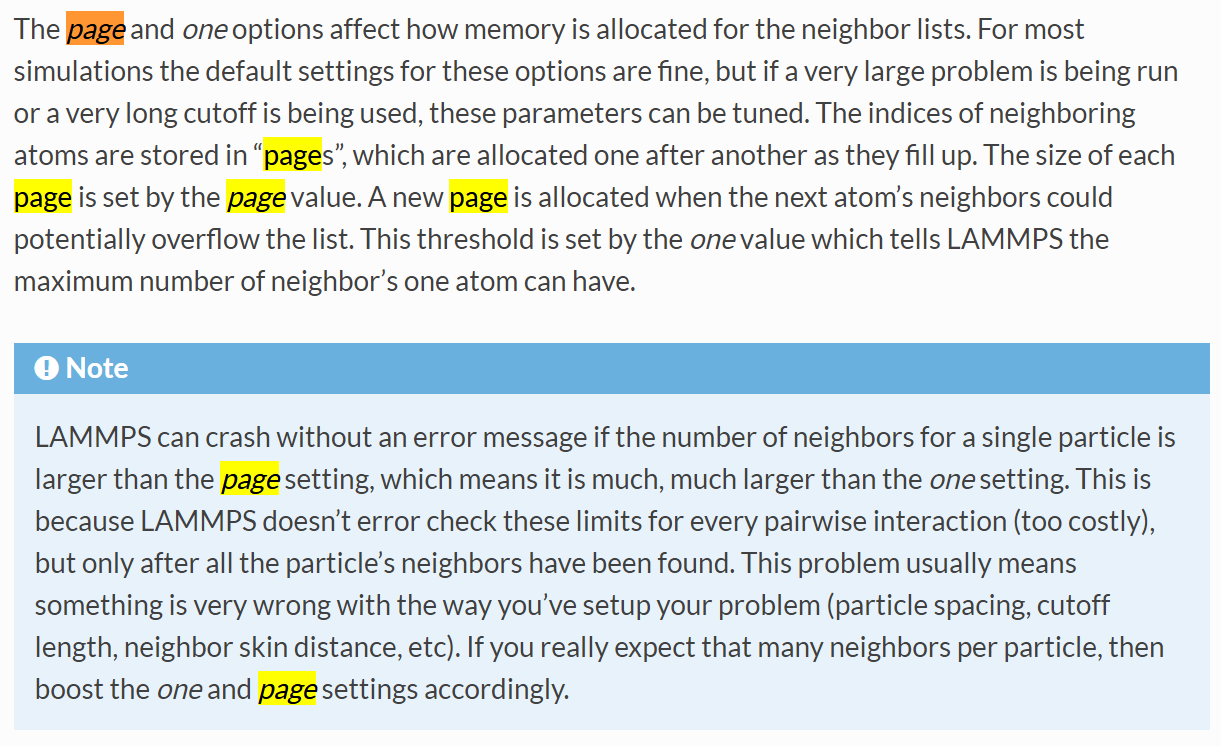Dear Lammps users,
I am trying to calculate the interface energy of Al & Al2Cu system at 550 K, with the bond potential order of Al-Cu (https://www.sciencedirect.com/science/article/abs/pii/S092583881631009X?via%3Dihub).
The input file is shown as below. The general procedure is I first relax the system for 100000 steps, and then run another 100000 steps for data production. The system contains 144 atoms.
I run this on our group server, as well as the server in stampede2 and comet of XSEDE resource. The common problem generated from those machines is, when I run with just 1 core, the simulation can proceed, but when I tried to increase up to 12 cores, the simulation stops due to machine errors. The lammps version I am using is lammps-07Aug19. I also attached the data file, potential file, the error message (the input file as well). This error seems to be related with the memory of the machine itself, not the input error.
I would really appreciate if anyone can provide any hint regarding this error. Thanks a lot for the time and patience! I understand that everyone is busy.
--------------------------- Initialization--------------------------------------------------------
units metal
dimension 3
boundary p p p
atom_style atomic
newton on
variable mytemp index 550
variable mypress index 0
variable thermostep index 10
variable timestep index 0.001
variable runstep equal 100000
variable relaxstep equal 100000
variable medium equal {runstep}/{thermostep}
variable material string Al+Al2Cu
#----------------------------Create geometry from a structure file---------------------------------
read_data Al+Al2Cu.data
neighbor 0.3 bin
#----------------------------Apply potential-------------------------------------------------------
pair_style bop
pair_coeff * * AlCu.bop.table Al Cu Al
comm_modify cutoff 15
#----------------------------Thermal setting-------------------------------------------------------
timestep ${timestep}
thermo ${thermostep}
thermo_style custom cpu time step temp pe ke etotal
#----------------------------Energy minization and system relaxation-----------------------------------------------------
fix deletemomentum all momentum 1 linear 1 1 1 angular rescale
group Alalloy type 1
group Cu type 2
group Al2Cu union Alalloy Cu
dump minimization_Al2Cudump all custom 1 mini_Al+Al2Cu_temp${mytemp}.xyz id type x y z
dump_modify minimization_Al2Cudump sort id
velocity all create ${mytemp} 256 dist gaussian
min_style cg
minimize 1e-10 1e-10 5000 50000
reset_timestep 0
undump minimization_Al2Cudump
#---------------------------Run relaxation------------------------------------------------
fix npt all npt temp {mytemp} {mytemp} 0.1 iso {mypress} {mypress} 1
run ${relaxstep}
#--------------------------------data production-----------------------------------------
variable atemp equal “temp”
variable aetotal equal “etotal”
fix Aveoutput all ave/time {thermostep} {medium} {runstep} v_atemp v_aetotal file Avethermaldata_{material}_${mytemp}.results
run ${runstep}
write_data {material}_{mytemp}.data
#---------------------------------------finished---------------------------------------------------------------
Al+Al2Cu.data (4.84 KB)
Al2Cu+Al_C_ADP.indis (2.28 KB)
AlCu.bop.table (448 KB)
error.file (442 KB)
